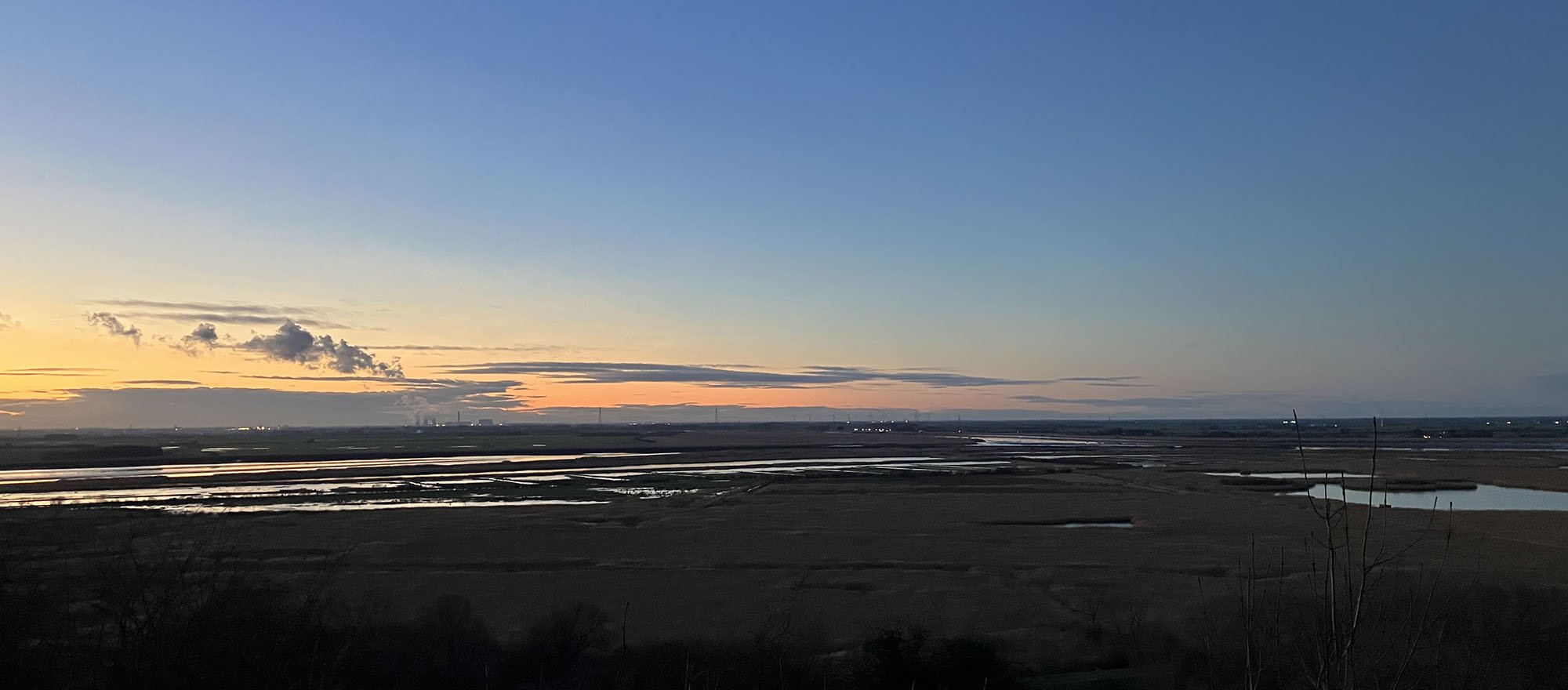Alkborough Flats January 3rd 2025
For the past 18 years I have been monitoring the wildlife, mainly birds, that used the Managed Realignment site at Alkborough Flats. Many thousands of hours later and 213 monthly reports, 18 annual reports and many thousands of images later I finally decided to retire as of the end of 2024. The site of course is still good for birds and other wildlife in spite of massive changes over the last 18 years mainly as a result of colonisation by reed of the former tidally inundated mudflats and latterly former arable fields and even wet grassland. The site now has a massive reedbed with decreasing areas of wet grassland and the range of bird species has changed dramatically in recent years.
Counting waders and wildfowl from the escarpment to the south of the Flats - now I can just enjoy the spectacle
March 2008 and below the same location February 2019
November 2023 - reed spreading across former open wet grass fields
So after a tip off from Neil D that Water Pipits were showing relatively well on the ice I left the car at Julian’s Bower and walked down the hill avoiding the icy road - the pipits were indeed showing to c50m not close for a small passerine so I used the RF 200-800 with a 1.4x converter giving 1120 mm equivalent but even then the birds were very small in the frame but the accompanying Meadow Pipits were closer as usual - why are Water Pipits always so skittish in Britain? Pied Wagtails were also skating on the ice and flocks of Lapwings and Golden Plovers occasionally rose up when a Marsh Harrier passed by and everything panicked when a Merlin dashed through only allowing very small record shots but my first of the year. Later I came across it again feeding on what appeared to be a Dunlin but as usual it did not linger for imagery. A nice male Stonechat in lovely light added to the birds photographed this year list. After a fairly short window of opportunity the pipit flock moved off into another field where they resumed their usual invisibility,
Meadow Pipit on ice - always at least 10m closer than the Water Pipits
Cracking little birds Meadow Pipits but yet another species in serious decline - very few now on my local patch and autumn movements particularly limited
Meadow Pipit picking food items from thistle - all the pipits were picking something from the dead thistle leaves
Pied Wagtails are also always so much tamer than Water Pipits
they often do seem to be slipping and sliding on the ice
Water Pipits selection below - never really close enough but better than most of my images
often feeding from the thistle leaves
spider maybe from the nettle leaf
Merlin on a distant fly past
Merlin with prey possibly a Dunlin
Another species that is so incredibly wary of human beings in Britain but so accepting of them in Canada
The sun was still shining mid-afternoon so after a longish walk I went back to the hide to be greeted by a flock of 90 Shoveler rotating in a feeding flock at point blank range. Numbers then built up to 200 and a cracking drake Pintail came in for a short sojourn. I then finished off with roosting Marsh Harriers and a Barn Owl and almost a sunset with Venus and the Moon showing well!.
Reed Bunting in the lovely afternoon sun - still had the 1.4x converter on the 200-800 - with good light it is still really sharp
Love the intricacies of Reed Bunting plumage
The subtle tones of a drake Gadwall in the low winter sun
Gadwall drake rear end
Incoming Shoveler with a mix of background shades
a drake Shoveler is impressive
but 200 are more so - a few Gadwall muscling in
They occasionally blasted off for no apparent reason
A drake Pintail outshines all wildfowl in late winter sun
A female Marsh Harrier pre roosting in the edge of a reedbed
Male Marsh Harrier dropping into roost
Two Roe Deer just before sunset
Post sunset looking across the Flats to Trent Falls and Yorky land
The moon and Venus













































